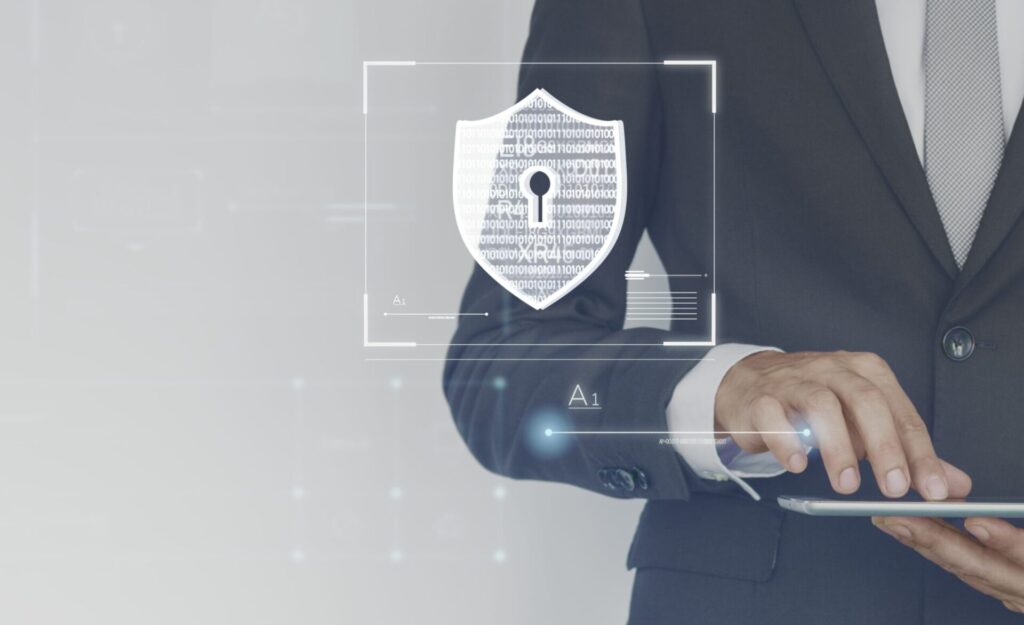10 Essential Data Security Solutions for
Protecting Sensitive Data
Protecting Sensitive Data

Maintaining sensitive data is a legal requirement for many businesses in Singapore, regardless of their scale. There are Data Protection Officers (DPO) or Executives specifically assigned to conduct regular security audits and educate company employees about data compliance. They also train new staff members who have completed their PDPA courses, also known as Personal Data Protection Act courses and are now involved in data processing.
With a growing number of data breaches occurring around the world, governments have been enacting their own data privacy laws, each more stringent than the last. As data breaches have become more of a probability than a possibility, companies must ensure that they have the proper safety procedures in place to identify any security events that occur within their IT systems. Especially if they want to avoid falling out of compliance with the PDPA in Singapore and pay substantial sums in fines, lawsuits or compensation.
However, certain terms associated with various data security solutions, as well as their overlapping features, can be confusing. Therefore, let us take a look at ten of the most critical data security solutions for businesses in order to better understand how they work.
1. Data Discovery and Classification
A data classification software will search your repositories (on-premise and in the cloud) for documents containing sensitive data and classify them as they are discovered. It will facilitate the removal of redundant or duplicate data, help with assigning access controls, and increase visibility into where data is stored and how it is used.
2. Firewalls
Often the first line of defence for a computer or a network, a firewall prevents unwanted traffic, such as viruses, from entering a system. They also safeguard accessible ports, limiting the attack surface available for a malicious hacker.
3. Backup and Recovery Systems
In the event of a data breach, a backup and recovery system is required for a firm to restore its data files and resume operations. In general, backup files should be concealed and encrypted, with an authority figure being able to swiftly retrieve them if necessary. Backups need to be performed on a regular basis.
4. Security Information and Event Management
A Security Information and Event Management (SIEM) solution enables real-time monitoring and analysis of security event logs created by systems, networks, and applications. SIEM is highly advanced when compared to other solutions used for safeguarding information based on the Personal Data Protection Act. It is also considerably expensive and has a complicated installation and maintenance procedure.
5. Antivirus and Anti-Malware Software
Antivirus and anti-malware software are commonly used to prevent viruses and malware from infiltrating networks. Since viruses and malware behave distinctively, this software targets and detects malicious code to eliminate viruses, trojans, and rootkits that attempt to steal, damage, or corrupt sensitive data.
6. Intrusion Detection and Prevention Systems
Intrusion detection systems (IDS) and intrusion prevention systems (IPS) are deep packet inspection software that analyses network traffic for suspicious activities. They can be easily configured to evaluate system event logs, detect suspicious activity, and send alerts. This software prevents hackers from accessing file servers via exploits or malware.
7. Data Loss Prevention
A data loss prevention solution is utilised to prevent sensitive data from leaving a business network, as required by the Personal Data Protection Act. These solutions use business rules to detect and block suspicious outbound traffic as well as alert system administrators of the potential breach.
8. Employee Monitoring Software
This software monitors productivity and typical user behaviour while detecting insider threats. When defined uncommon behaviour takes place, employee monitoring software can notify system administrators via the main admin console. It can also be used to monitor a remote workforce.
9. Data Encryption
You can find various data encryption solutions in the market. There are some that will prompt you for a password every time you try to access data on an encrypted drive. Some of them will encrypt individual files and folders, while others will provide a designated folder where you can place the encrypted data. Some solutions will also require a master password to access any file on a specific device.
10. Network Security Solutions
Along with the security tools described above, businesses should actively consider a variety of network security solutions. Depending on how it operates, the sensitive data protection approach of a corporation might range from access controls to cloud security.
Enrol in the Government-Approved PDPA Courses at Assure Safety
Assure Safety offers highly relevant and government-approved PDPA courses in Singapore for individuals aspiring to be Data Protection Officers or Executives in the ICT sector. Our courses include a wide range of subjects, from personal data security procedures to data breach incident management. They also provide essential information regarding PDPC mandatory breach notification in cases where data has been breached and compromised. With our PDPA courses, we aim to equip you with the knowledge and skills you need to understand data governance and data security thoroughly to reach your career objectives.
If you want to obtain your PDPA practitioner certificate, enrol in our PDPA courses today!

